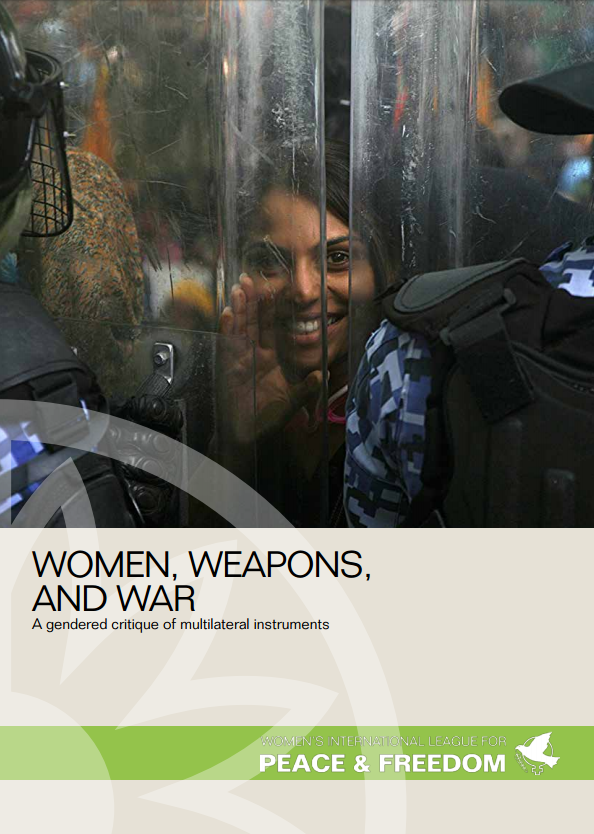WOMEN, WEAPONS, AND WAR – a gendered critique of multilateral instruments
By Magdalena Szwiec
WILPF Norge

The paper focuses on synergies and contradictions related to gender and women in the Arms Trade Treaty (ATT), the UN Programme of Action on trade of small arms and light weapons (UNPoA), a number of UN Security Council, UN Human Rights Council and UN General Assembly resolutions, and other relevant treaties, declarations and commitments.
The main goal of this elaboration is to highlight the impact on women of weapons use, trade and proliferation as well as promoting the participations of women in disarmament, non-proliferation, and arms control. Moreover the paper stresses a need to develop a more holistic approach in implementation of instruments mentioned above.
One of the points which is crucial while discussing this matter is the overview of language on women and gender in the ATT and UNPoA documents. The problem lies in the tendency of categorization of women and focusing on their vulnerability rather than their agency. Only the UNPoA Fifth Biennial Meeting of States outcome document promotes women’s participation in Small Arms and Light Weapon (SALW) related work. Furthermore, all documents present lack of engagement with the concept of gender, except in references to gender-based violence in the ATT. The framing of women as the most negatively affected, together with children and the elderly leads to positioning women as weaker sex. This assumption ignores the fact that women are not legally, politically, or physically comparable as group to children or the elderly. Nor are women homogenous group. Women are different ages, races, ethnicities, religion and sexualities; are differently abled; have different political views, different socioeconomic statues and vastly different experiences in the world, in societies, in communities, and at home. As the result of this, women have different experiences before, during and after armed conflict and armed violence.
The paper covers also big number of other relevant instruments which unfortunately falls in to the same trap as ATT and UNPoA in their categorization of women as vulnerable group. In addition none of discussed texts goes as far as to incorporate a comprehensive gender perspective into their conceptions of power in relation to weapons use, trade and proliferation.
Critical objective of the paper are recommendations which indicate a huge potential in synergies between the instruments considered in it. To be able to do so states, international, regional and national organizations and civil society groups should reconsider: interpretation of gender based violence, categorization of women and promotion of presence of gender perspective in all treaties, resolutions, commitments and declarations on the possession, transfer, proliferation and use of weapons.
The report should be considered as a tool for improving an understanding of potential synergies which taken together have greater chance of advancing human security, including that of women and increasing gender diversity in various forums, negotiations and initiatives.
——–
Read Women, Weapons and War here.

